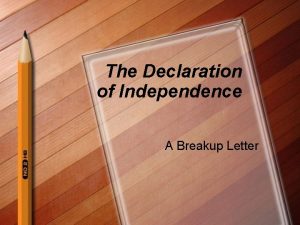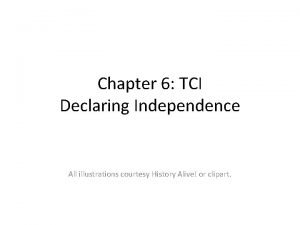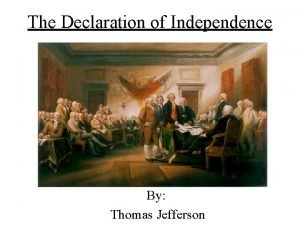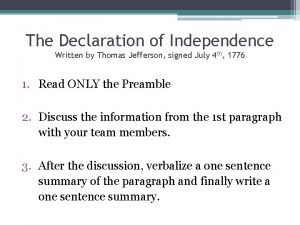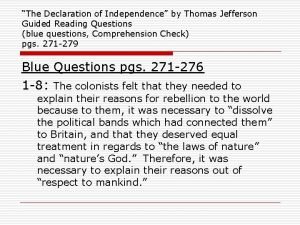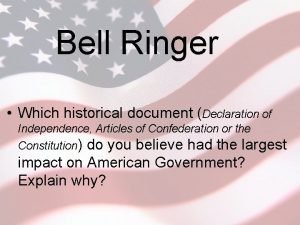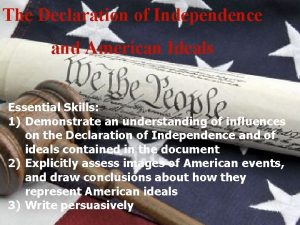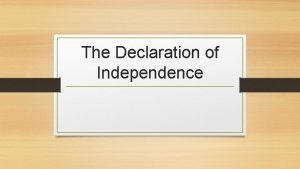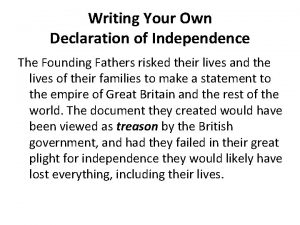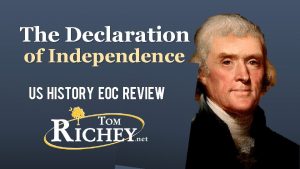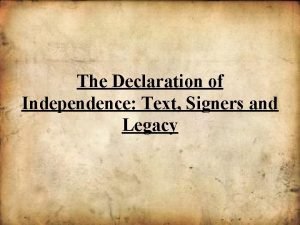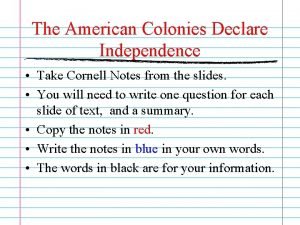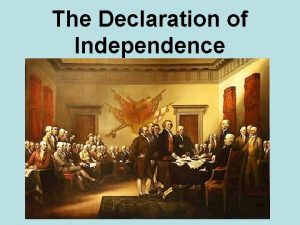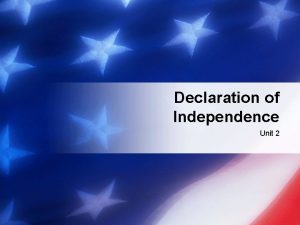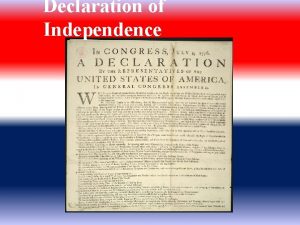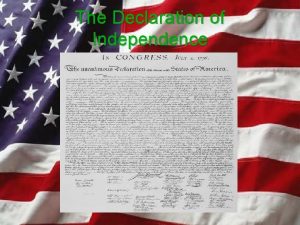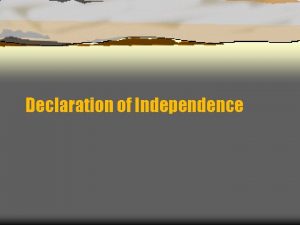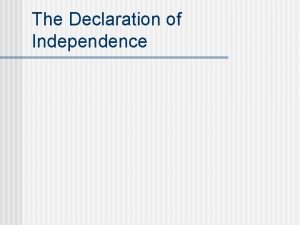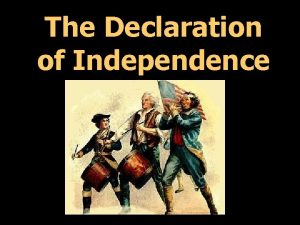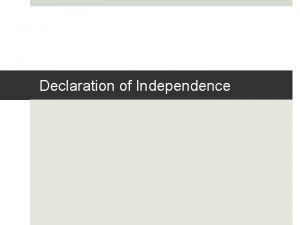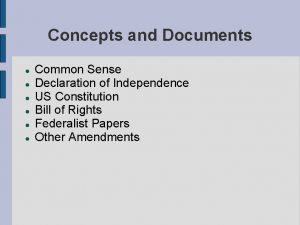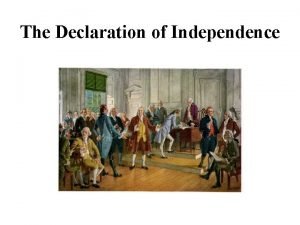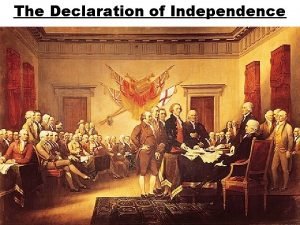Declaration of Independence Its Common Sense Common Sense
















- Slides: 16

Declaration of Independence

It’s Common Sense

Common Sense • Pamphlet written by Thomas Paine • Purpose was to tell the colonists that it was time to make the break. • Published January 1776, 500, 000 copies sold within 6 months.

Common Sense • Colonists did not owe loyalty to King George III. • Very idea of having Kings or Queens was wrong. • Colonists owed nothing to Britain. They helped colonists only for their own profits. • Ridiculous country 3, 000 miles away to rule a continent (British Colonies)

Common Sense • Paine wrote that people should rule themselves. • “A government of our own is a natural right. ” • “Everything that is right or reasonable pleads for separation. … ‘Tis time to part. ”

• Richard Henry Lee, from Virginia introduced a resolution in favor of independence in June 7, 1776. • “…these United Colonies are, and of right ought to be, free and independent States. ”

SHOULD THEY BREAK? • If they declared independence, they were traitors. Traitor – a person who betrays his country. PENALTY: DEATH BY HANGING

Committee of 5 • Thomas Jefferson, VA • Benjamin Franklin, PA • John Adams, MA • Robert Livingston, NY • Roger Sherman, CT

John Hancock • President of Continental Congress • Signed Declaration of Independence First • He said that King George will be able to see his signature without his glasses nd 2

July 2, 1776 • Vote to make colonies “free and independent states” • Some changes were made.

July 4, 1776 • John Hancock signed document on that date

Different parts of the Declaration • Preamble – introduction – Explains why the document was written • “…they should declare the causes which impel them to the separation. ”

Natural Rights • Rights belonging to all people from birth – unalienable/natural • (based on Locke) • Life • Liberty • Pursuit of Happiness

Natural Rights • Governments can only exist if they have the “consent of the governed” • If government fails to protect the rights, then people have the duty to overthrow the government and replace it.

British Wrongs • Quartering British soldiers in colonists’ homes • Cutting off trade with all parts of the world • Imposing taxes without representation in Parliament • Hiring Hessians to fight against the colonists

Independence • Last part is the actual Declaration of Independence. • They closed the Declaration with a solemn pledge, pledging their lives, fortune, and sacred honor. • Have the power to declare war, set up trade, and make treaties.
 Declaration of independence breakup letter
Declaration of independence breakup letter Tci chapter 6 answers
Tci chapter 6 answers Declaration of independence all men are created equal
Declaration of independence all men are created equal Too late to apologize declaration of independence
Too late to apologize declaration of independence Thomas hobbes declaration of independence
Thomas hobbes declaration of independence Declaration of independence summary
Declaration of independence summary Declaration of independence sections
Declaration of independence sections Examples of parallelism in the declaration of independence
Examples of parallelism in the declaration of independence Teenage declaration of independence
Teenage declaration of independence Declaration of independence bell ringer
Declaration of independence bell ringer Ideals in the declaration of independence
Ideals in the declaration of independence Who wrote the declaration of independenc
Who wrote the declaration of independenc How to write your own declaration of independence
How to write your own declaration of independence The declaration of independence
The declaration of independence Declaration of independence sections
Declaration of independence sections Cornell notes on the declaration of independence
Cornell notes on the declaration of independence What does equality mean to diana pham
What does equality mean to diana pham
